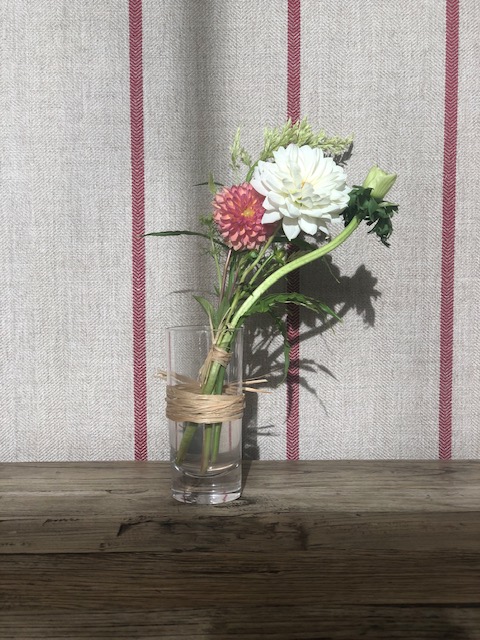Best mindfulness practices that will elevate your life

Ancient, tested mindfulness practices from the east
Meditation can be difficult, too high a hurdle to jump over without collapsing during the time-consuming failing attempts. It reacquires discipline and practice. Most of us give up before its blissful effects can penetrate the body and mind. Even if you have the ideal setting, a noise-free room, there will be days when neighbours will be drilling into the walls, their kids racing on the floors right above you or someone manicuring their impeccable garden with a motorised mower.
Practicing on your own, feelings rather than aligned positions focused form of yoga is much easier and a realistic habit to stick to. For some people it is as much beneficial as sitting still during a deep meditation session. Being in your body, acknowledging the sore muscles from a game of tennis yesterday, the stiff back and tight hips, even a dislocated vertebrae in need of a gentle twist to ‘click’ it back – all that brings awareness of your body’s needs, but at the same time it tunes your mind on a smooth jazzy frequency. Yoga practice can become mindfulness in movement, but it is better to practice on your own. Too many distractions float to the surface of the studio that can make mindfulness practices more challenging.

Gentle stretches and slow, precise movements of the body are also the main aspects of Tai-Chi and Qi-Gong, far-eastern mindfulness practices when you work with your body’s energy. For Tai-Chi I very much relished in Master William C.C. Chen’s Tai Chi Chuan technique suitable for beginners. His studio os based in New York. Also the resident teacher at the Golden Door in California opened my practice into more flowing, dance-like savouring of the present moment. For Qi-Gong online I recommend Master Fumin Wang Guo.

Martial arts are about mastering focus and guiding the mind beyond fear and other hurdles that could weaken you, potentially cost you life. Personally, I tried the Japanese sword art Iaidō (居合道). Ironically, it is not about violence at all, the weapon is just a tool to fully engage with, to merge with into oneness. So is the traditional practice of calligraphy. Anywhere I grasped the brush, dipping it carefully in the dripping ink, with gentle movement of my arms transferring the writing tool to the paper, I was fully present. Whether it was a formal studio, a temple in Kyoto, a practice after a lunch with a friend in private kaiseki room in Tokyo and even a noisy cafe in the bustling Marrakech Medina, the location did not matter, for it was purely about my mind being set on the activity. Mindfulness practices like these require honing a skill.

Breathing is a well-known and researched technique indispensable not just for our survival but also aiding with all body & mind connecting practices. The energising flow of an inhale and the releasing power of each exhale, both require enough concentration to distract us from other activities and disturbances. At the same time breath directs the body’s life energy (qi, prana, …) to balancing pace.
Harmony and longevity are terms used often in the eastern world. I wrote about them in my long-life musing. Mindfulness is one of the most potent non-material tools that can help us to live longer and be happier. The key is to let go, while observing. This sounds almost contradictory, but when we free ourselves from intense emotions we have time and space for objective observation. We liberate ourselves from our subjectivity.

TO RELEAVE YOUR OVERLOADED MIND TRY THESE TECHNIQUES:
Next to meditation, yoga, qi-gong, tai-chi martial arts and breathing, there are other tools you can implement into your daily life to increase your mindfulness.
I enjoy ikebana, Japanese mindful flower arrangement attuned to the changing seasons in nature.


Su-Mei Yu, the author of The Elements of Life advises using your beauty time (not just ladies) to unwind and bring attention to your mind. When making a face mask at home, lie down and relax while it’s nourishing your skin for the recommended 10 to 20 minutes of its penetration. It is an opportunity to clear your head and skin at the same time.
During a massage at a spa, just focus on each part of the body as the therapist touches the skin and become aware of any stiffness, soreness or other signals that our body is expressing.
Being on a quiet beach, the perfect place where nature with its relaxing hiss of the waves, let the sound guide your mindfulness practice. Just close your lids, and feel the sun rays penetrate through your skin. Warmth in itself is calming.

Nature rejuvenates our spirit, but a strenuous hike requires our attention being dispersed in the environment, so we do not slip and injure ourselves. Take a break, sit down on a comfortable stone or a bench and savour the clean mountain air, the fragrances of the forest and the meadows or the mineral breeze swooshing refreshingly from the sea.
Music is another marvellous tool that can tune us into the state of deep focus. It depends on the type of music though. Plus, each of us likes different type of music and needs to test what works best. I wrote about the power of sound in my other musings. The piano music composed by my French friend Tom Zaruba that can be played on La Muse Blue’s poetry page works magic. His album tilted Slow Down invites you to do just that with both your body and the mind.
There is no one mindfulness practice that is better than other, it is more about finding and practicing the one or more you like, those that you can realistically include in your every day lifestyle. Consistency becomes mastery. Become strong.

